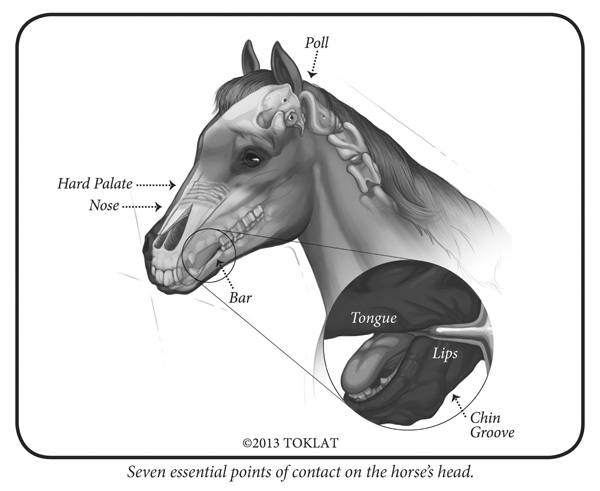If your horse resists your commands, he’s probably trying to tell you that he’s uncomfortable with the bit and the pressure on his tongue. Bits can only do two things: cause resistance or cause relaxation. Tongue pressure plays an important role in resistance. When a horse is resisting a bit, he’s really evading tongue pressure because the bit is interfering with his ability to swallow.
Recognizing the signs of Resistance
Horses resist the bit to find more tongue relief. These signs of resistance are most often associated with the bit:

When your horse is resisting the bit, you need to find a bit that gives him more tongue relief than the bit you are currently using.
Selecting a Bit for Your Horse
Every horse and rider combination has specific needs for a bit. As the needs of horse and rider change over time, it may become necessary to reevaluate the bit you are using. Knowing the equine mouth is crucial to proper bitting. Points of pressure caused by the bit are shown below:

Transitioning to a New Bit
Once you’ve selected a bit, it’s time to introduce your horse to it. We recommend that you introduce any new bit in a safe, closed environment, such as a round pen or arena. There are two exercise we recommend as transition exercises: vertical flexion and lateral flexion.
To practice vertical flexion, stand next to your horse’s head and lift the reins at the withers until you make light contact. Hold the contact until your horse give to the bit, even slightly, then immediately release. Do this on both sides until your horse is relaxed and flexing at the poll.
To practice lateral flexion, stand next to your horse and lift the rein, but ask him to bend his neck and turn toward you. When he does, release him immediately. Perform this exercise on both sides until he is relaxed and flexing laterally. Then repeat both exercises from the saddle.
